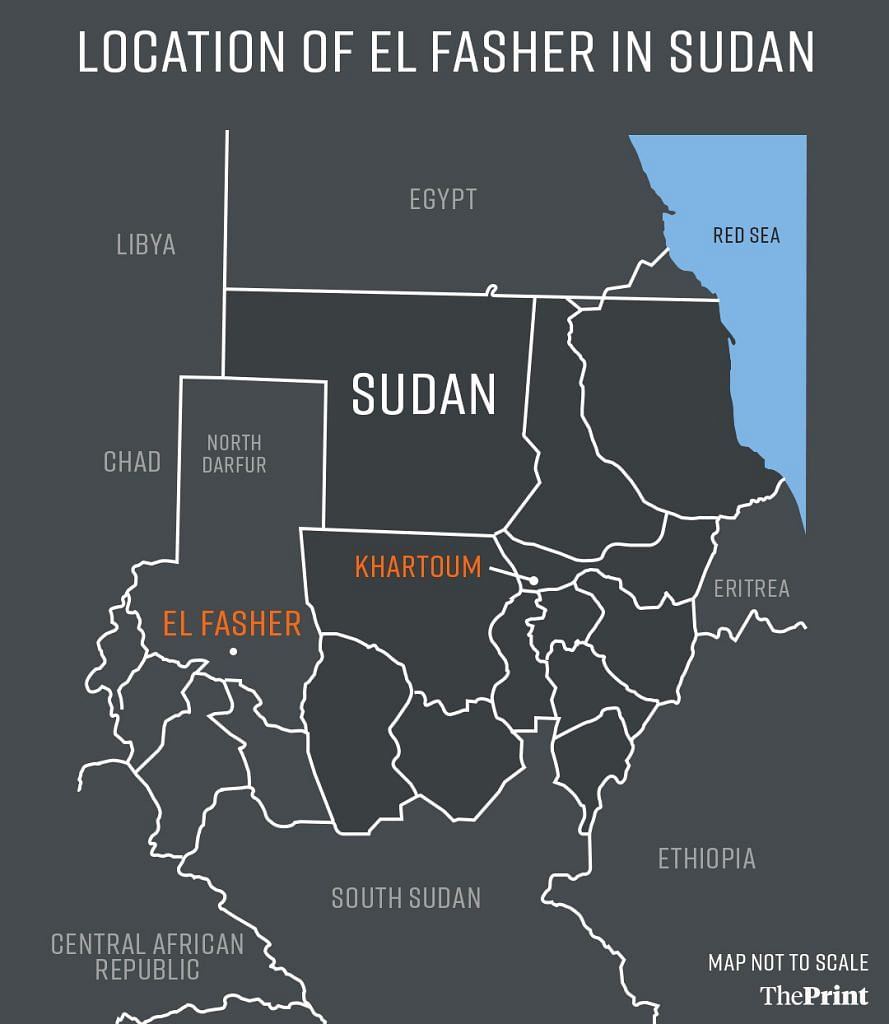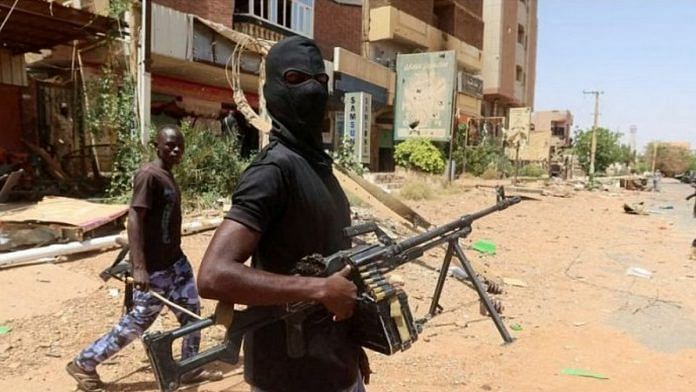New Delhi: One year after the Indian government evacuated 3,961 citizens from Sudan in Operation Kaveri, bloodshed continues unabated between the paramilitary Rapid Support Forces (RSF) and the Sudanese Armed Forces (SAF). El Fasher, the capital of North Darfur, teeters on the “precipice of a large-scale massacre”, according to the US.
“The RSF must end its siege and swear off any attack on the city. All parties must pull back military forces. The entire international community must bring pressure to bear at this moment of peril,” Linda Thomas-Greenfield, the US ambassador to the United Nations, posted on X Monday.
El Fasher is the last of the five capitals in the Darfur region not yet under the control of the RSF, which has been warring against the Sudanese army since 15 April 2023. The war has killed at least 16,458 people, according to the Armed Conflict Location and Event Data Project (ACLED), a US-based crisis mapping organisation.

Over 8.7 million people—one-sixth of Sudan’s population—have been displaced and a third of the population faces acute hunger, with a potential famine looming, according to the United Nations Office for the Coordination of Humanitarian Affairs (OCHA).
An estimated 4.9 million people—including children under five, pregnant women, and nursing mothers—are acutely malnourished in 2024.
The war stems from a power struggle between two generals — Abdel Fattah al-Burhan, Sudan’s de facto leader, and Mohamed Hamdan Dagalo, the commander of the RSF. Their rivalry has wreaked havoc on the country, worsening a situation of continuous turmoil since the 2000s, fuelled by tribal conflicts, power struggles, and shifting alliances.
Also Read: From East to West, India is making a big push for transnational transport corridors. Here’s why
Genesis of the conflict
Mohamed Hamdan Dagalo, also known as Hemedti, was appointed commander of the Rapid Support Forces in 2013. The RSF’s origins lie with the notorious Janjaweed militias unleashed by the Sudanese government during the first Darfur war between 2003 and 2008—a conflict that led to the deaths of 300,000 people and displaced 2.5 million.
The then president of Sudan Omar al-Bashir was charged by the International Criminal Court (ICC) on five counts of crimes against humanity: murder, extermination, forcible transfer, torture and rape; two counts of war crimes; and three counts of genocide, for his role in the violence unleashed by the Sudanese state against the people of Darfur. However, he is yet to be tried.
The original conflict in Darfur erupted between African tribes (such as the Fur, Masalit, Zaghawa) who were sedentary farmers, and Arabic-speaking tribes (Baqqara) who were nomadic herders. The outbreak of violence in the early 2000s had its roots in several factors, including land ownership disputes, competition for resources, and marginalisation by the Khartoum-based national government.
As the fighting unfolded, the struggling Sudanese army reportedly utilised the Janjaweed militias—comprising members of local Arabic-speaking tribes—to regain control of Darfur.
In 2013, Bashir formalised these militias into the RSF, an armed paramilitary organisation led by Hemedti. The RSF became the backbone of his regime and later fought as mercenaries in Yemen as part of the Saudi-led coalition, according to a New York Times report.
However, ties between Bashir and Hemedti eventually frayed. Hemedti’s RSF stood down from attacking anti-government protestors in 2019. He then joined forces with the Sudanese army’s General Abdel Fattah al-Burhan to remove Bashir from power. However, protests against continued military rule persisted.
On 17 July 2019, the military and protestors signed a political agreement establishing a Transitional Sovereignty Council to run the affairs of the country. Burhan served as chairman, Hemedti as deputy chairman, and Abdalla Hamdok, a civilian, was appointed prime minister.
Burhan and the military promised to hand over power to civilian rule after 21 months. However, just before the handover of power was due, Burhan and Hemedti staged a coup d’etat, removing civilian members from the council. However, with the two men tussling for power between themselves as well, the partnership ended in April 2023, leading to the current hostilities.

In the past year, the RSF has captured four of Darfur’s five state capitals—El Geneina (West Darfur), Nyala (South Darfur), Ed Daein (East Darfur), and Zalingei (Central Darfur). El Fasher (North Darfur) remains the only capital under SAF control, with an estimated 800,000 civilians threatened under threat from the approaching RSF.
International impact & Russia factor
The war between the RSF and SAF also has international implications, especially due to Sudan’s strategic location on the Red Sea. This region has previously attracted interest from Russia, which has explored establishing a naval base there.
On 29 April, Russia’s deputy foreign minister Mikhail Bogdanov, met with Burhan at the Red Sea city of Port Sudan in what has been called a show of solidarity. This city has become a base for Burhan and the SAF since the RSF captured swathes of Khartoum in April 2023.
Additionally, Hemedti reportedly visited Moscow shortly before Russia’s invasion of Ukraine in February 2022. Furthermore, the Russian military contractor Wagner Group has reportedly been involved in illegal gold mining operations within Sudan.
The United Arab Emirates (UAE) has also emerged as a potential player in the conflict. The US on Monday accused the UAE of supplying weapons to the warring parties in Sudan and appealed for an end to this support.
According to the New York Times, the UAE has allegedly been supporting Hemedti and the RSF with weapons from a base in Chad—Sudan’s neighbour to the West. The report further alleges that the UAE is using its hospital in Chad’s Amdjarass and the nearby airport to transport weapons, including Kornet anti-tank missiles, to Hemedti’s forces.
Also Read: Iranian Army a ‘stabilising force’ in Persian Gulf, says India’s Military Intelligence chief
(Edited by Asavari Singh)




Nice story. Anyone talking about one more partition of Sudan ?